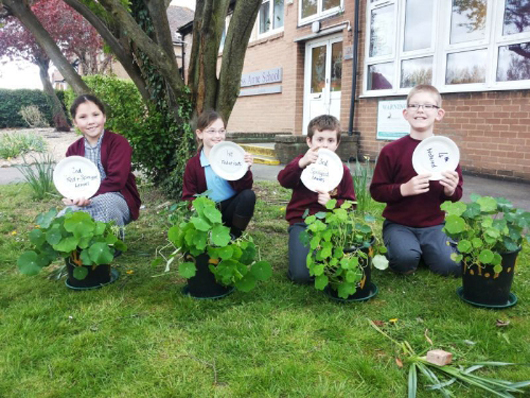
Healthy Living and the need for tasty vegetables, fruit and edible flowers in the diet of school children are this year’s themes for the Miracle-Gro’wers Learning Journey stand GPJ/9 at this year’s Chelsea Flower Show.
As part of the Scotts Miracle-Gro Company’s outreach programme to the community, Scotts Miracle-Gro has this year encouraged more than ten thousand school pupils to embrace and enjoy gardening and horticulture for the first time.
More than 100 schools, including 20 secondary academies have grown edible plants and as a result discovered some of the secrets of healthy eating and living. Plants grown by these 10,000 Miracle-Gro’wers will be exhibited in the Discovery area of the Great Pavilion together with some representative samples of broad beans and edible flower that were grown in scientific experiments by the schools.
As a back up to an attractive edible garden full of outstanding fruit, vegetables and edible flowers will be a detailed graphics depicting a Healthy Living Plan that promotes the need for everyone to eat five portions of fruit and vegetables each and every day. At the moment research* shows that only 1 in 10 children eat FIVE-A-DAY, every day.
The stand is split into two areas. On the main gangway visitors will see a productive school food garden showing fruit, edible flowers and healthy vegetables. Among the vegetables will be new varieties from Thompson and Morgan including edible flowers including a winter-hardy Calendula ‘Banana Blizzard’, a climbing Fuchsia ‘Pink Fizz’ (yes the petals are edible and so are the seed pods) Runner beans ‘Firestorm’ and Snowstorm’, climbing courgette ‘Black Forest’, 2nd early potato ‘Jazzy’, a decorative Kale ‘Scarlet’ and a garden pea for container growing called ‘Bingo’.
Behind the edible garden is the Kitchen/ Laboratory area where schoolchildren will meet visitors to the show each day of the week so they can explain the results of their growing trials and explain the results
Schoolchildren grew broad beans from seed in three different growing media to see if improving soil made a big difference. They used A) plain soil, B) a 50:50 mix of soil and compost bin material and C) a mixture of both those ingredients mixed with new Miracle-Gro Magic Start. Come and see the statistical results compiled from more than two hundred and fifty plants. A separate feeding trial was carried out by some schools using edible flowers of nasturtiums and pot marigolds. Plants grown in soil and fed at the roots with soluble Miracle-Gro were compared to unfed plants and those that were fed by spraying leaves (foliar feeding) to prove that fed plants grew bigger and stronger.
